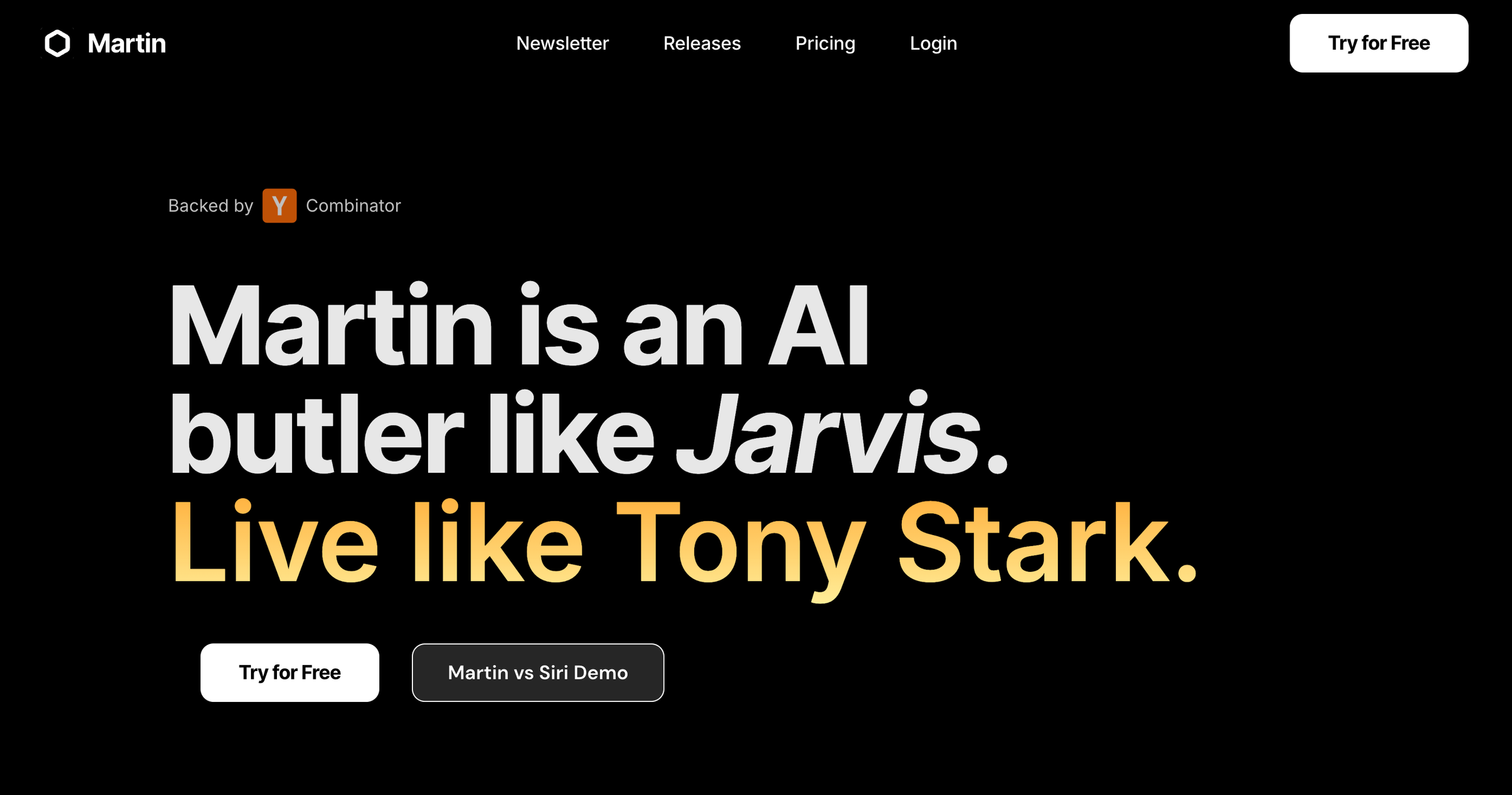The Correct Order For Effective Messaging
The mistake nearly every entrepreneur makes with messaging is leading with benefits, features, something “clever,” or straight numbers — how much money your customer stands to make or not lose if they work with you.
Here’s an example:
Now, I have no idea if Martin is a good product or not — it randomly came across my LinkedIn. I do know it’s really hard to make a decision on whether this is for me or not based on this H1. And that’s the point of marketing — to make it breathtakingly, painstakingly obvious who you help. And to do that, you need to know how humans think and market in that order.
Leading with a benefit is ineffective because humans don’t make decisions based on benefits. If anything, we’re skeptical of them. There’s a famous study where someone stood on a corner in NYC for a few days trying to give people $10 bills, and only 20% of people took it.
When most people see a benefit, they ignore it.
A far better approach is to market in the order humans digest information and make decisions. Here it is:
Problem
Risk + Benefit
Solution
We’ve talked about problem language — how people are subconsciously managing problems that impact them all day. Because of this, leading with problem language is the most effective approach for getting attention and building trust. Whether in the subject line for a cold email, the H1 on a website, or the first sentence in a digital ad. The more specific, the better.
But once you’ve earned a few seconds of attention from a specific problem, you’ve got to keep attention by nailing “risk + benefit.”
Here’s an example:
If you’re working on a startup idea and struggling to run interviews, and you land on a site that says “You know you should be running interviews to validate your customer, but it’s hard and uncomfortable,” you’ll pay attention.
But, your mind will immediately jump to risk: “Sure, I have this problem. But I’m unique, there’s no way they accounted for my predicament.”
Maybe that predicament is that you’re starting a business in a new market and you’ve got no network. So simply finding people is tough.
Our job, as marketers, is to predict that risk and put it in the H2.
H1: “You know you should be running customer interviews, but it’s hard and uncomfortable.”
H2: “Even if you’re new to an industry and have no contacts, we’ll help you get the insights you need to make a decision”
We read their mind with the problem language, then predict what’ll make them hesitate with the risk language. Finally, after we’ve built up trust, we talk benefits and the specific solution we build.
This might seem hard or tedious, but it's an enormous opportunity. Almost no one does it because it requires defining who your customer is and having the discipline to talk directly to them.
An awesome exercise is to pick someone you've interviewed and build a basic landing page for them with a problem language H1. Show them the landing page over Zoom, then ask what their immediate hesitation is — what's holding them back?
That risk, often word-for-word, becomes our H2.
Problem, risk + benefit, solution. Overly specific, and in that order.

